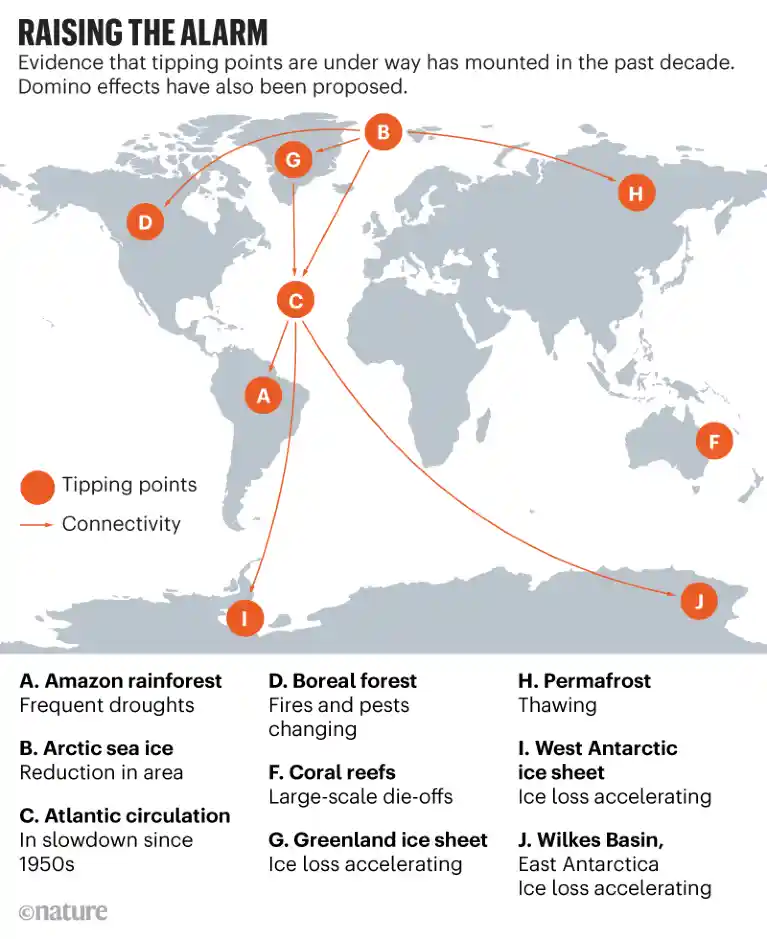
“No amount of economic cost-benefit analysis is going to help us. We need to change our approach to the climate problem.”
In an article in the journal Nature, scientists call for urgent action to reduce greenhouse gas emissions. It states that more than half of the climate tipping points identified a decade ago are now “active,” a group of leading scientists have warned.
Though global temperatures have fluctuated over millions of years, the authors say humans are now “forcing the system,” with atmospheric carbon dioxide concentration and global temperature increasing at rates that are an order of magnitude higher than at the end of the last ice age.
Tipping point risks are now much higher than earlier estimates, while urgency relates to how fast it takes to act to reduce risk.
Exiting the fossil fuel economy is unlikely before 2050, but with temperature already at 1.1°C above pre-industrial temperature, it is likely Earth will cross the 1.5°C guardrail by 2040. The authors conclude this alone defines an emergency.
Nine active tipping points:
- Arctic sea ice
- Greenland ice sheet
- Boreal forests
- Permafrost
- Atlantic Meridional Overturning Circulation
- Amazon Rainforest
- Warm-water corals
- West Antarctic Ice Sheet
- Parts of East Antarctica
The collapse of major ice sheets on Greenland, West Antarctica and part of East Antarctica would commit the world to around 10 metres of irreversible sea-level rise.
Reducing emissions could slow this process, allowing more time for low-lying populations to move.
The rainforests, permafrost and boreal forests are examples of biosphere tipping points that if crossed result in the release of additional greenhouse gases amplifying warming.
This “cascade” of changes sparked by global warming could threaten the existence of human civilisations.
“This is what we now start seeing, already at 1°C global warming.
“Scientifically, this provides strong evidence for declaring a state of planetary emergency, to unleash world action that accelerates the path towards a world that can continue evolving on a stable planet.”
In the commentary, the authors propose a formal way to calculate a planetary emergency as risk multiplied by urgency.
“No amount of economic cost-benefit analysis is going to help us. We need to change our approach to the climate problem.”
Please support us as we Climate Strike for Climate Justice. Get in touch to find out the date of our next strike.
Journal Reference:Timothy M. Lenton, Johan Rockström, Owen Gaffney, Stefan Rahmstorf, Katherine Richardson, Will Steffen, Hans Joachim Schellnhuber. Climate tipping points — too risky to bet against. Nature, 2019; 575 (7784): 592 DOI: 10.1038/d41586-019-03595-0

